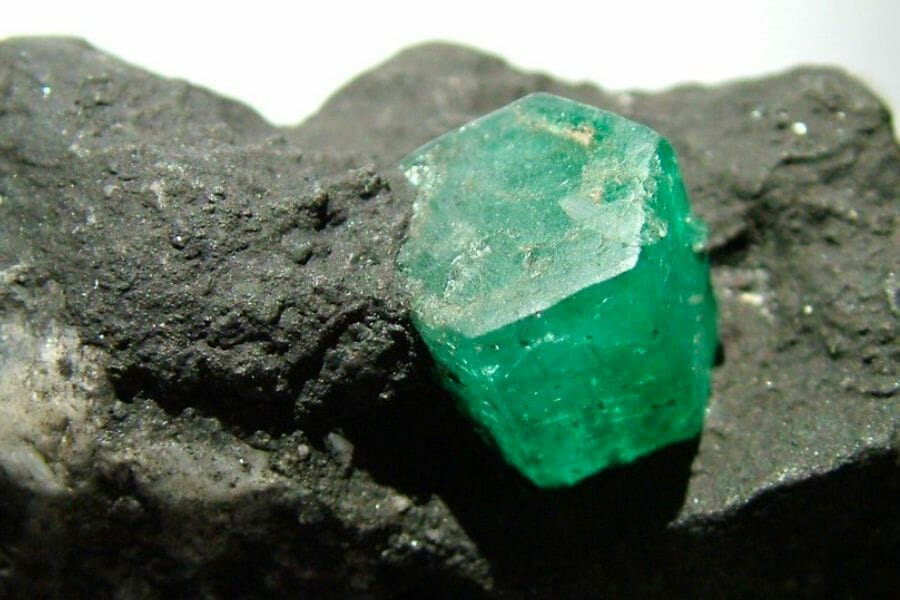Finding crystals can be a rewarding adventure, offering a unique way to explore the natural beauty and geology of the region. Whether you’re a seasoned rockhound or just getting started, knowing where to look is key to uncovering these hidden treasures.
In this state, a variety of locations provide opportunities to discover different types of crystals. From rocky outcrops in the mountains to stream beds that carry sparkling surprises, each area offers its own unique finds for those willing to search.
We can help you get started with some places you can explore for crystals below!
Crystals you can find in the US
The United States offers a wide range of crystals that reflect its diverse geology. From vibrant gems to more subtle mineral formations, there’s something to discover in nearly every region.
Calcite
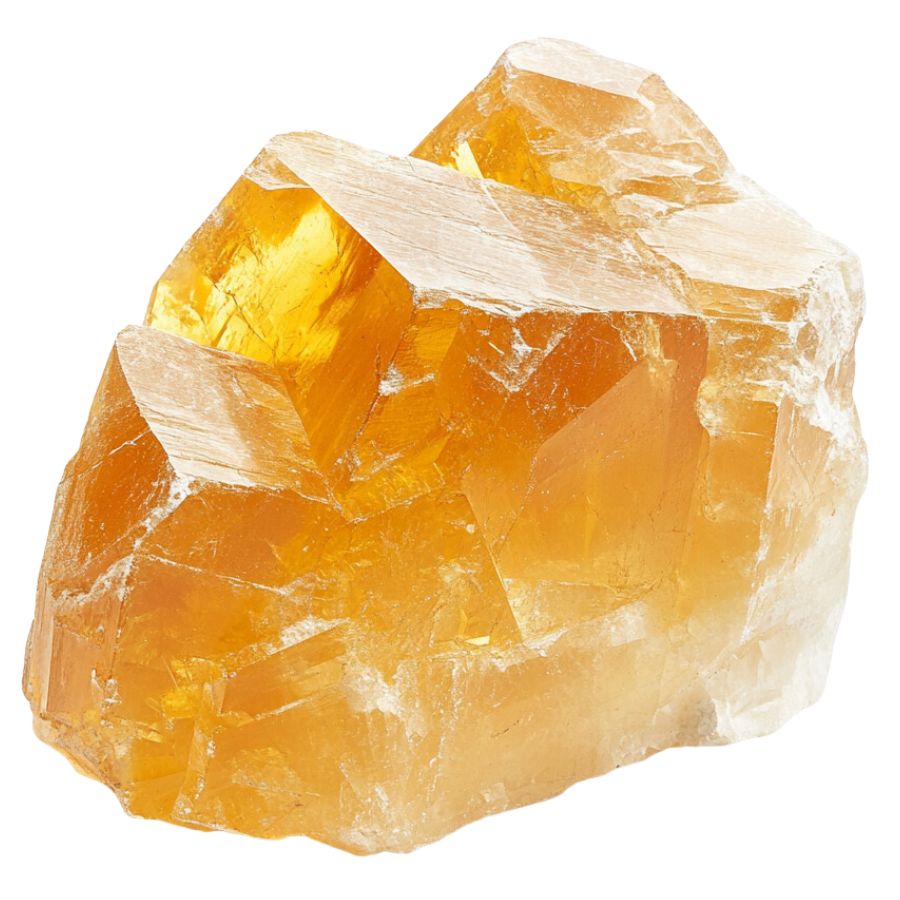
With a variety of forms and a unique property of double refraction, calcite allows objects viewed through the crystal to appear doubled. This mineral can appear in a spectrum of colors, with pure forms typically being transparent or white.
In addition, calcite reacts vigorously with acids, which aids in distinguishing it from other minerals. It also frequently contributes to the structure of sedimentary rocks such as limestone.
Gypsum
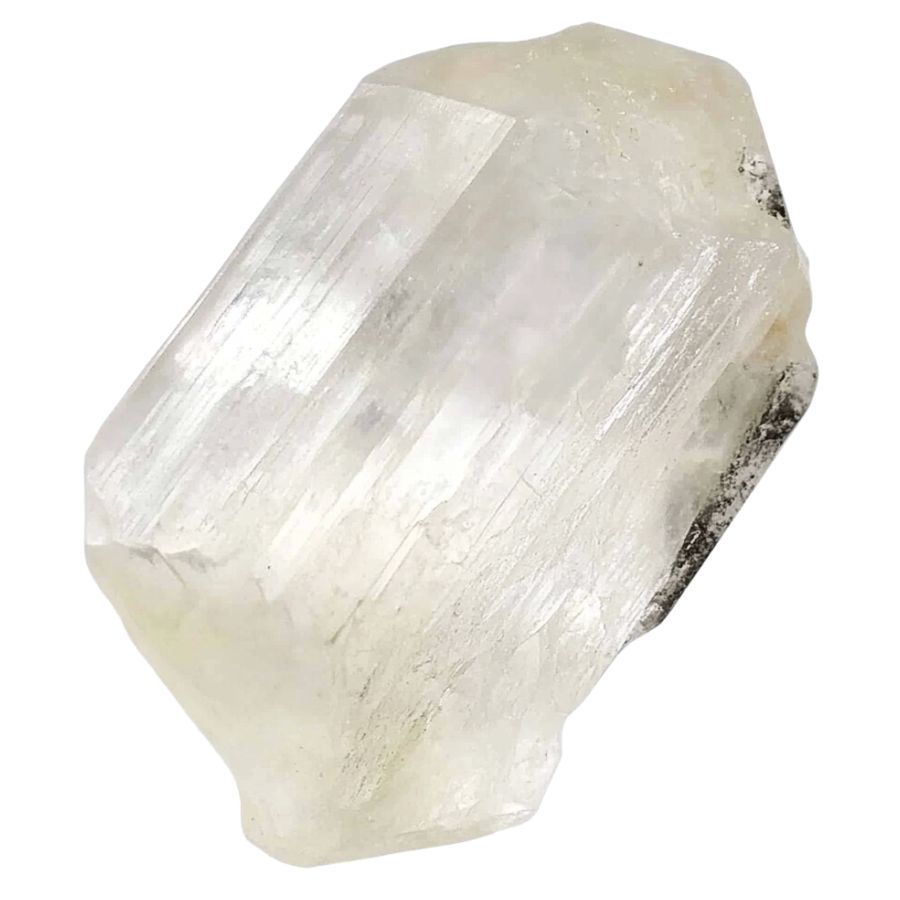
Gypsum’s notable softness allows it to be easily scratched with just a fingernail, often presenting as white or very light-colored in its pure form.
It manifests in both crystalline forms, like selenite, and massive forms such as alabaster, making it versatile in use and appearance.
Gypsum is also essential in the construction industry and is a key component in the manufacture of plaster and drywall.
Fluorite
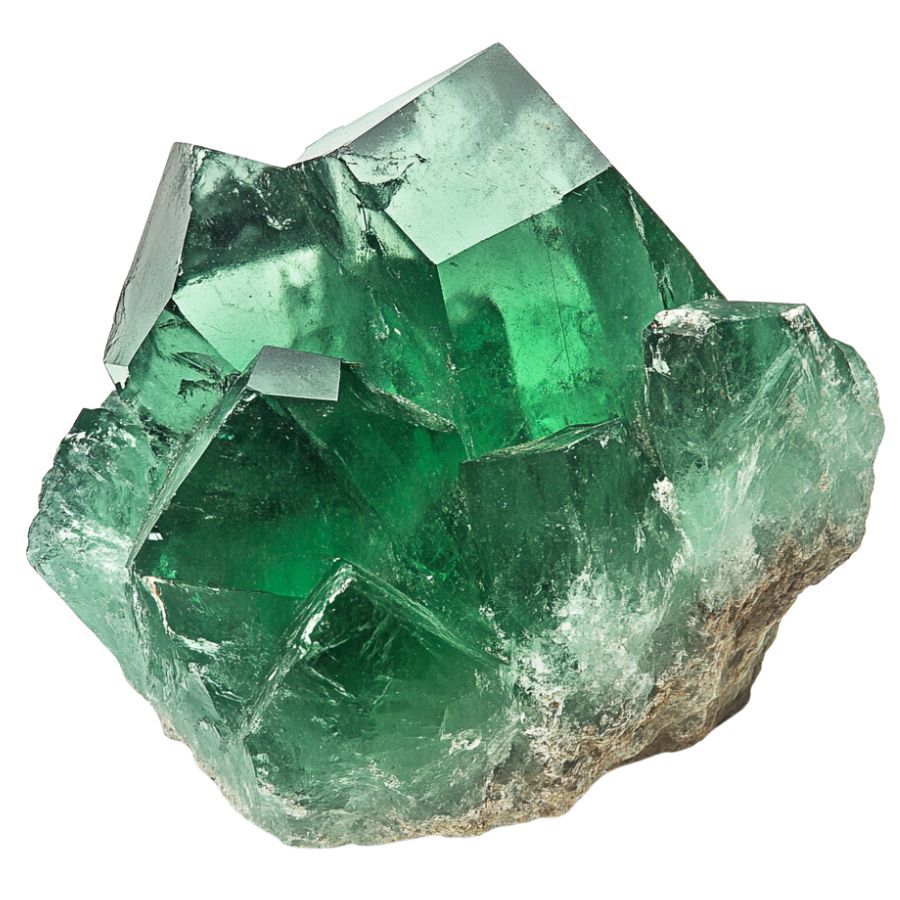
Fluorite comes in a wide range of vibrant colors, including purples, greens, blues, and yellows, and is known for forming in well-defined cubic crystals.
Beyond this, fluorite exhibits fluorescence under ultraviolet light! It can also be used in various industrial applications, including as a flux in steelmaking.
Galena
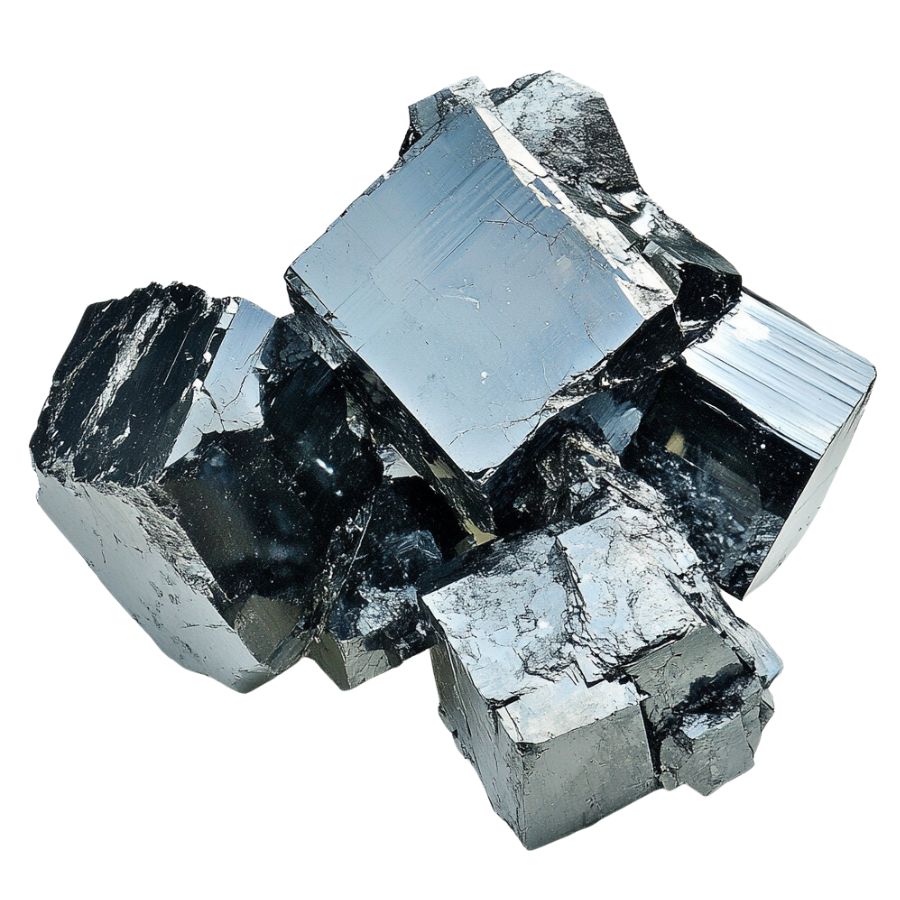
Galena distinguishes itself with a metallic luster and high density, typically found in a cube-like form. It serves as the primary ore of lead, making it important in the metal industry, while its shiny, silver color attracts collectors.
Not only does its appearance make it a subject of interest, but its weight and texture provide tangible lessons in mineral density and metallic properties. Galena also often contains traces of silver, adding to its commercial and educational value.
Corundum
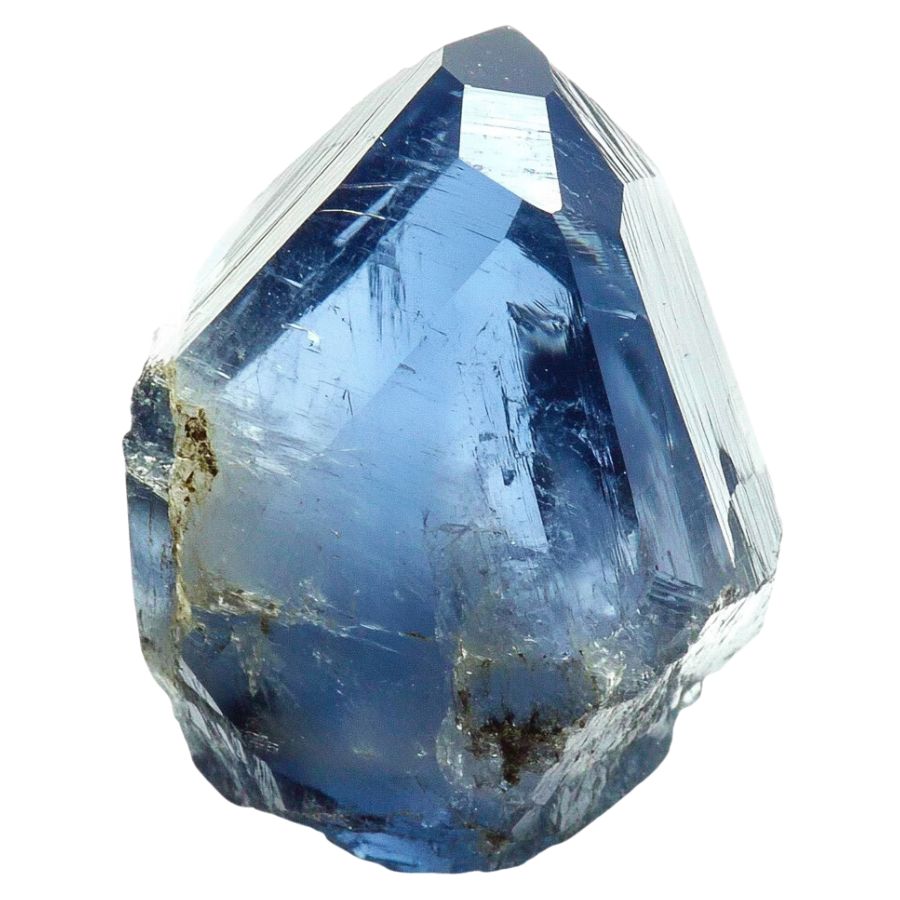
Corundum is a mineral that comes in a variety of colors, though it is typically transparent or gray. Its most famous forms are sapphires and rubies, which are prized for their vibrant blue and red hues.
The mineral is known for its remarkable hardness, ranking just below diamond on the Mohs scale. This durability makes corundum ideal for industrial abrasives and cutting tools, as well as a popular choice for fine jewelry.
Quartz
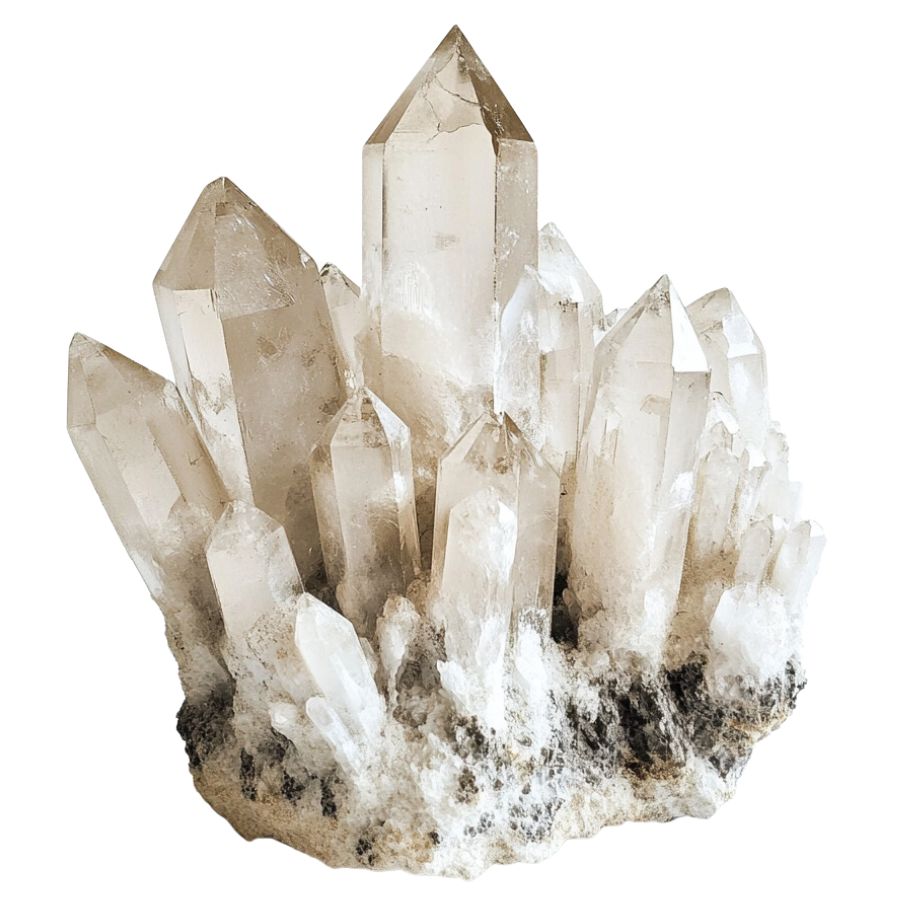
Quartz is among the most common minerals in the Earth’s crust and is prized for its durability and variety. It forms in a wide range of colors and types, from clear rock crystal to purple amethyst.
The mineral is notable for its hardness and durability, which contribute to its use in a variety of applications. Quartz is also popular in the manufacturing of electronics and watches due to its piezoelectric properties, which allow it to convert mechanical pressure into electrical energy.
Pyrite
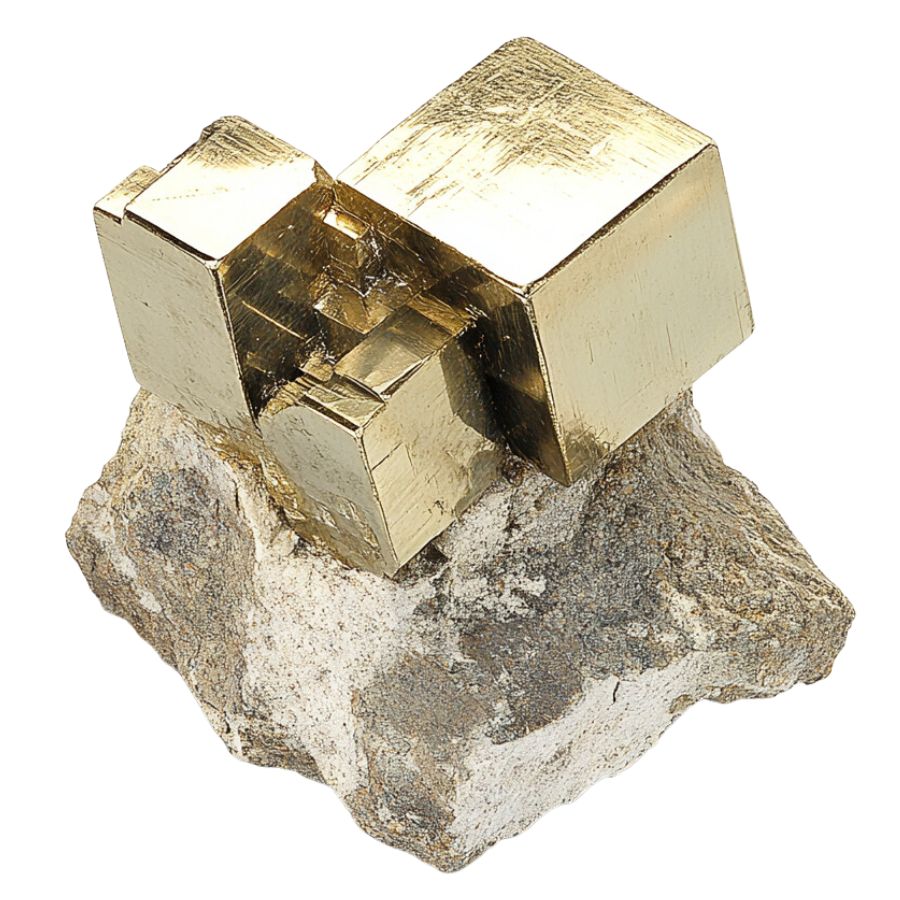
Often mistaken for gold due to its metallic luster and pale brass-yellow hue, pyrite is known colloquially as “fool’s gold.” Its characteristic cube-shaped crystal formations look man-made but are actually completely naturally formed!
Pyrite also has historical importance in producing sulfur dioxide for sulfuric acid production.
Rhodochrosite
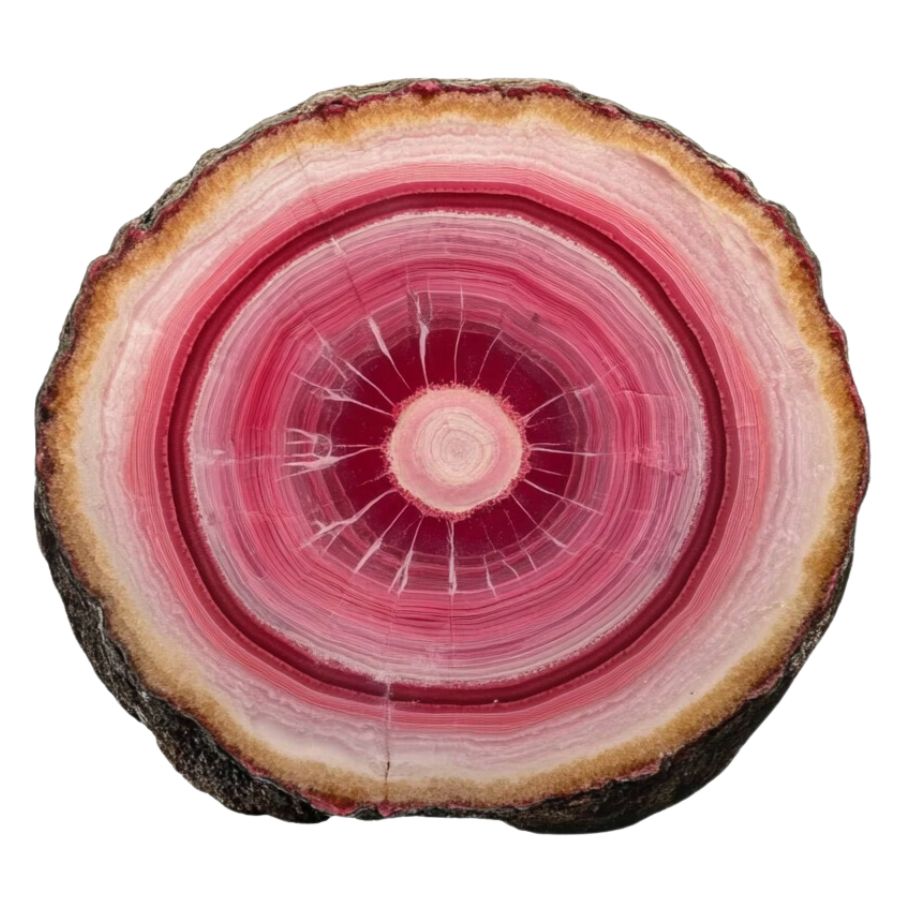
Rhodochrosite stands out with its rich pink and red hues, making it highly desirable as both a mineral specimen and a gemstone.
It typically forms in layered or stalactitic structures, with bands of colors that showcase how it grew over millions of years.
Beyond its beauty, rhodochrosite is significant as the main source of manganese, an essential element used in metal alloys.
Rhodonite
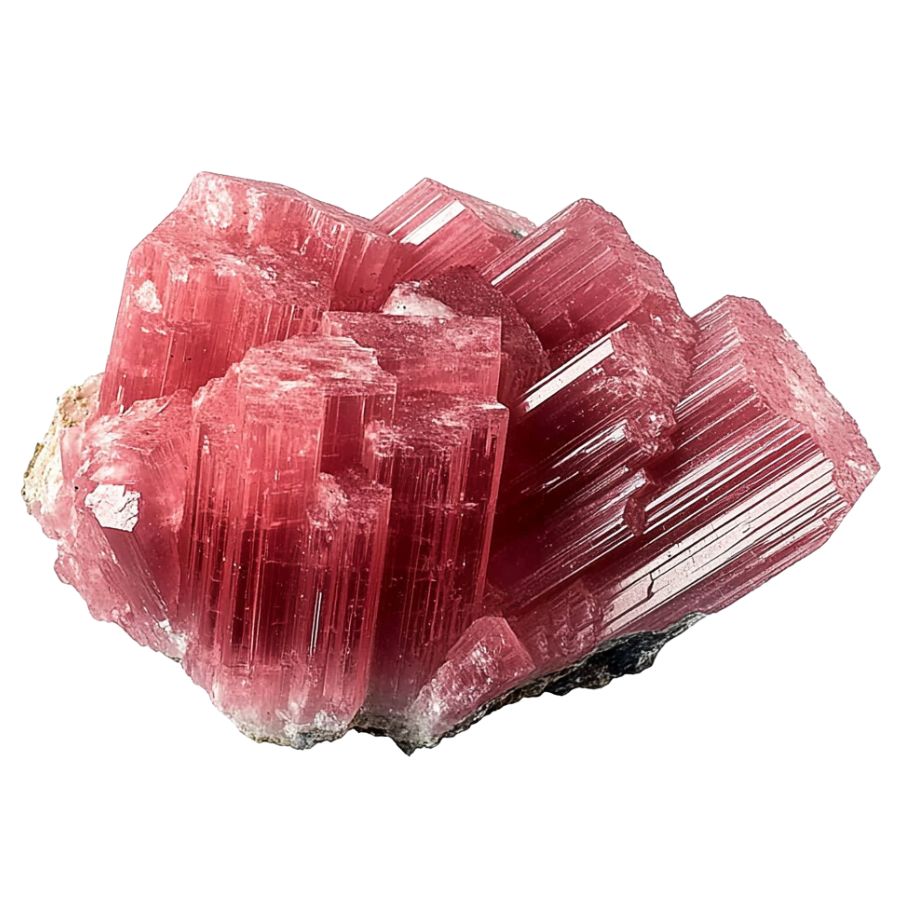
Appreciated for its deep pinks and reds, often complemented by black manganese oxide veins, rhodonite presents a dramatic appearance. It is typically found in metamorphic rocks and is used both as an ornamental stone and in jewelry.
In geology, rhodonite is significant for its role in metamorphic processes and its association with other manganese-rich minerals. It can be found in metamorphosed sedimentary rocks and is sometimes used as an indicator of the presence of manganese deposits.
Vivianite
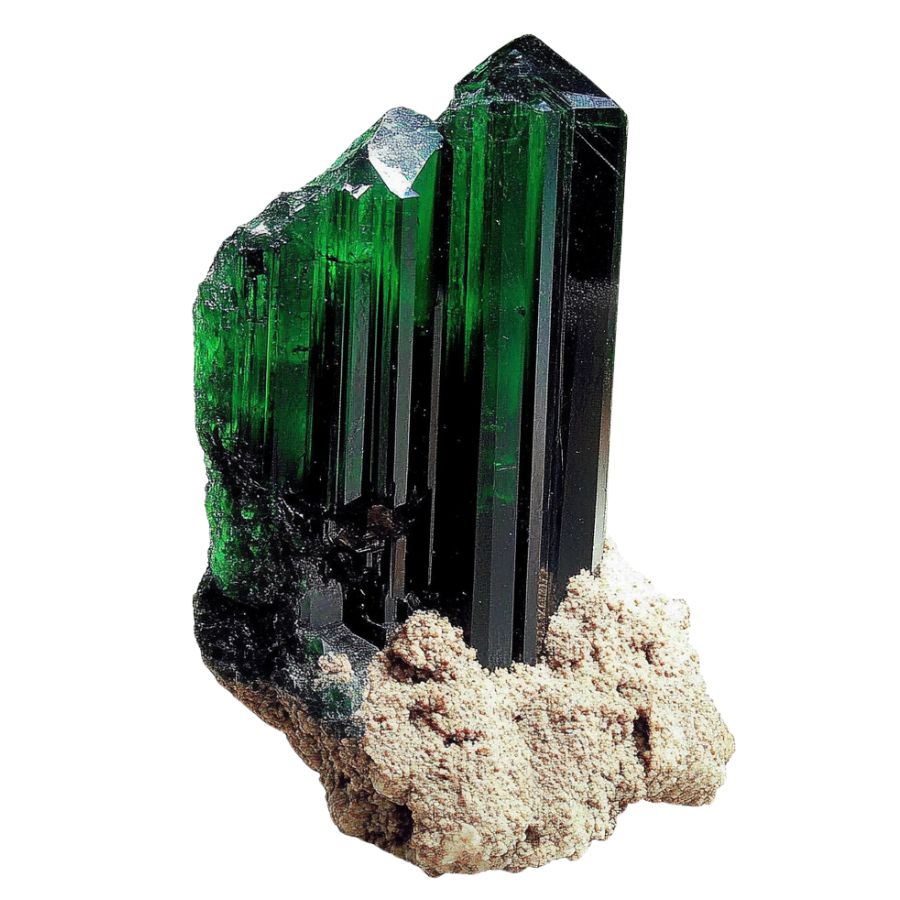
Vivianite, an iron phosphate mineral, emerges in low-oxygen environments like peat bogs or iron-rich deposits. Its striking blue to green color, which can change to a lighter shade over time due to oxidation, makes it a distinctive mineral.
Found in various geological settings, vivianite provides clues about the local conditions and the presence of phosphate deposits.
The Types of South Carolina Crystals You Can Find
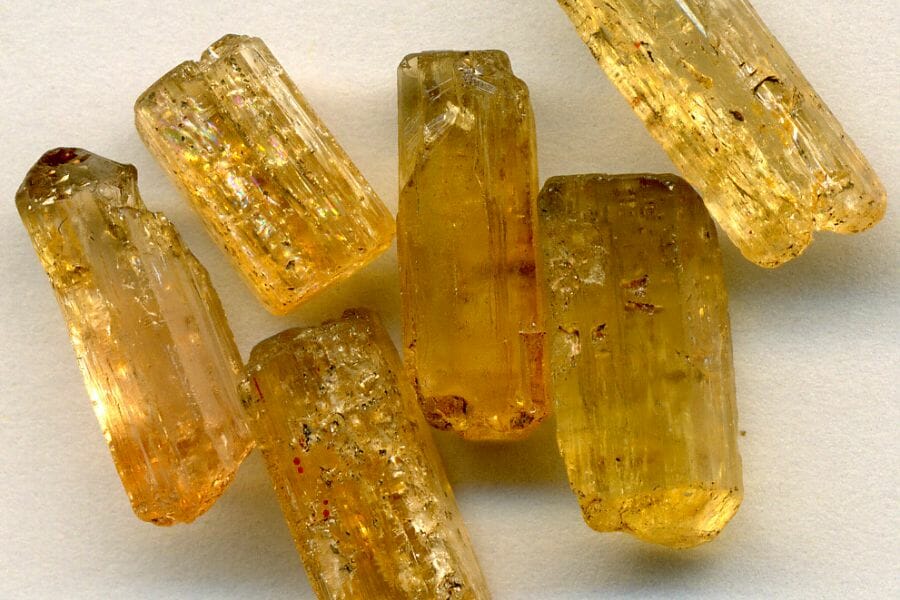
South Carolina is home to some of the most stunning crystals in the country. Our state’s varied geology, ranging from the ancient Blue Ridge Mountains to the coastal plains, means that there’s an abundance of different types of crystals here, such as the following:
Rare crystals found in South Carolina
- Amazonite
- Aquamarine
- Emerald
- Copper
- Covellite
- Kyanite
- Sapphire
- Topaz
More common crystals found here
- Agate
- Amethyst
- Chalcedony
- Chalcopyrite
- Diamond
- Epidote
- Galena
- Garnet
- Hematite
- Jasper
- Malachite
- Pyrite
- Quartz (Clear, Smoky, and Rutilated)
- Rutile
- Serpentine
- Tourmaline
- Unakite
What rough crystals look like
When you’re out looking for crystals on your own it’s important to know what you’re looking for. This is what you need to look out for:
Look for exteriors like this
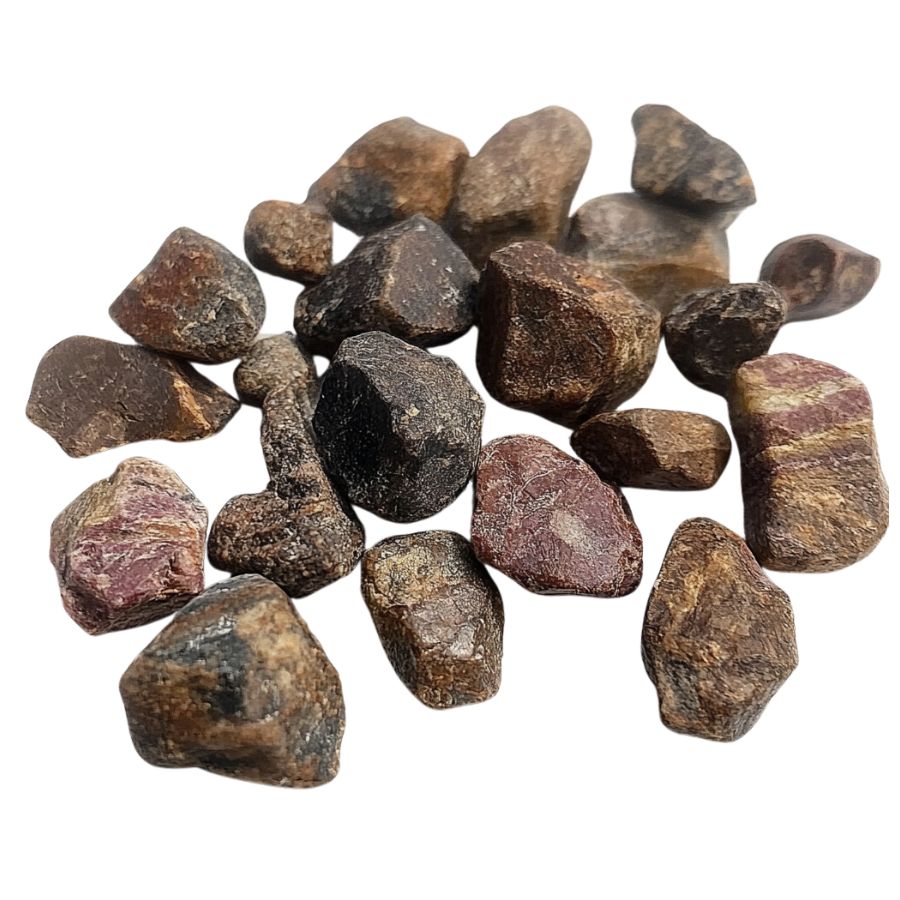
When you’re out searching for crystals in the wild, it’s essential to keep in mind that what you find won’t look like the polished stones you see in stores. One important tip is to consider what certain crystals look like in their raw, natural form.
Without the shine and smooth finish, crystals might appear rough, with jagged edges or earthy tones masking their true beauty. Understanding this can help you spot potential finds that might otherwise be overlooked.
Examine the crystal structure and shape
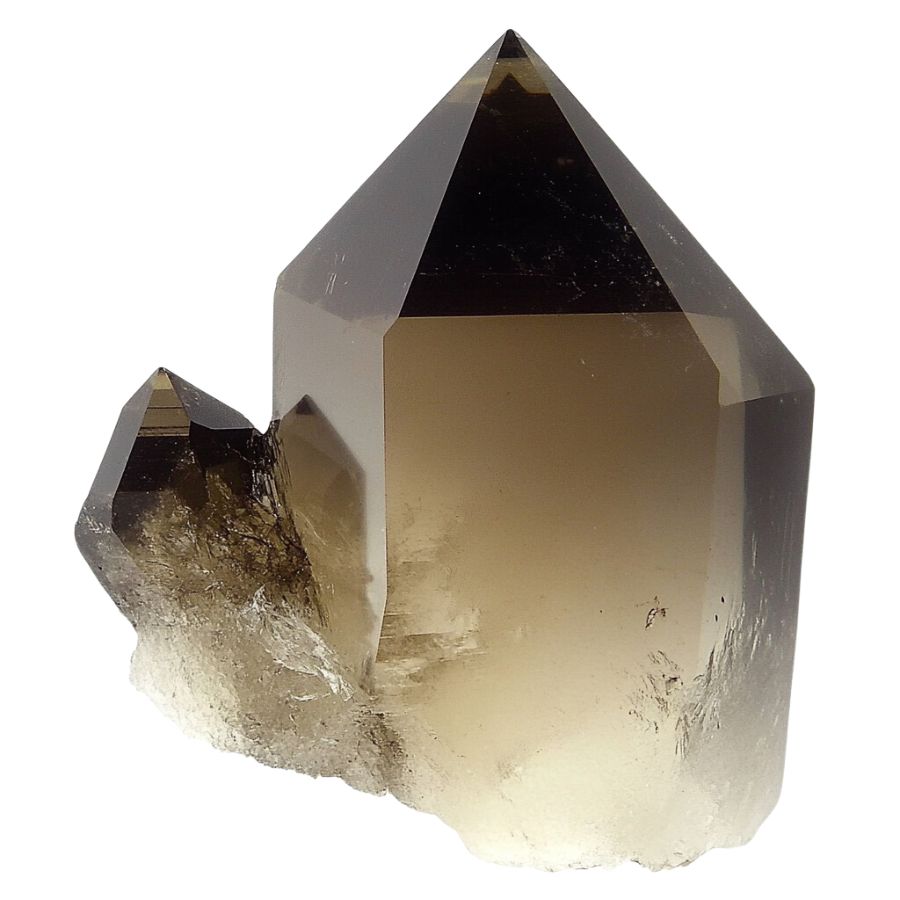
Crystals often form in specific geometric patterns that can be key to identifying them. For example, quartz is known for its hexagonal prisms, while halite typically forms cubic shapes.
By recognizing these distinct patterns, you can differentiate between various types of crystals and better understand what you’ve found.
Observe color
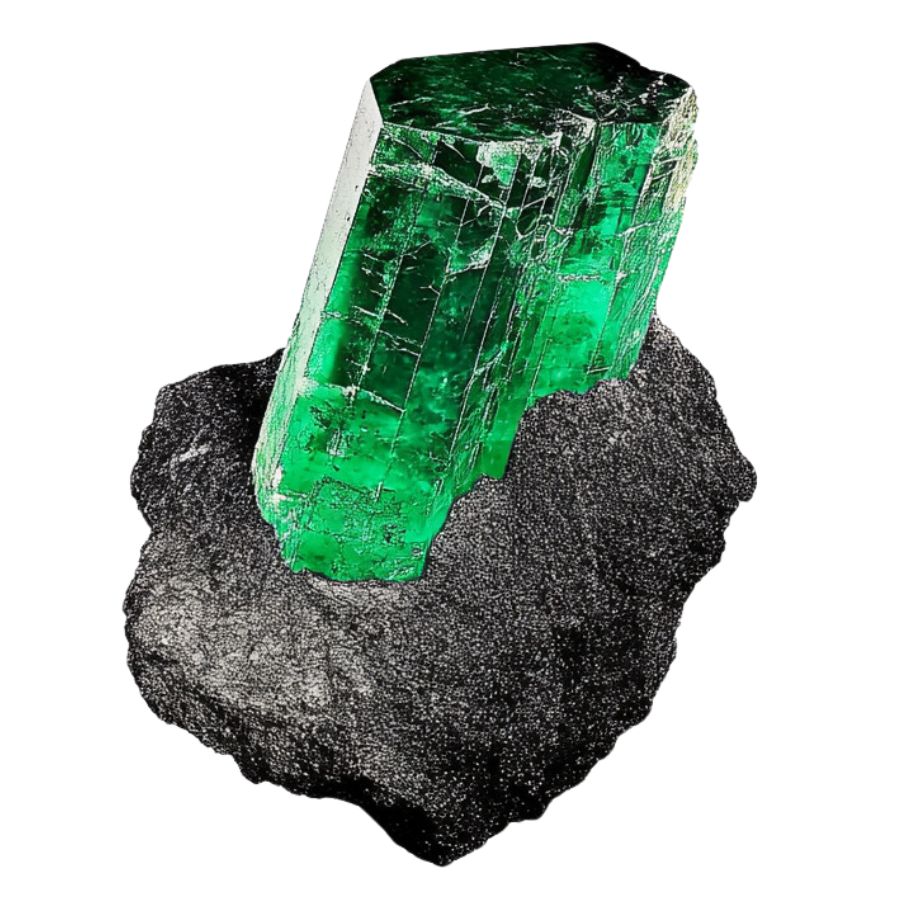
Some crystals are known for their distinct hues, like the deep purple of amethyst or the vibrant green of emerald. However, not all crystals will have strong colors; some may be clear or only slightly tinted.
Check the luster
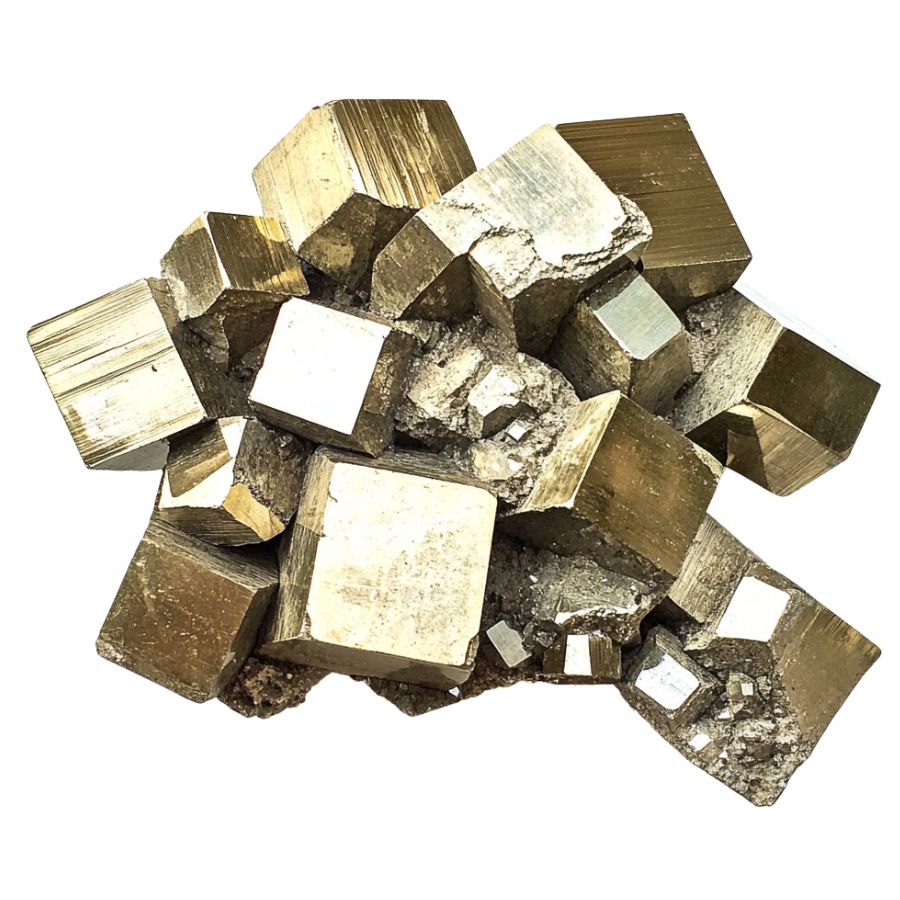
Luster refers to how a crystal’s surface interacts with light. Some crystals might have a shiny, glassy luster, while others may appear metallic or dull. This characteristic can help you determine the type of crystal you’ve found.
However, it’s important to remember that luster isn’t always obvious right away. In some cases, a crystal’s true luster will only become apparent after it’s been cleaned or polished, so keep this in mind as you examine your finds.
Evaluate the transparency
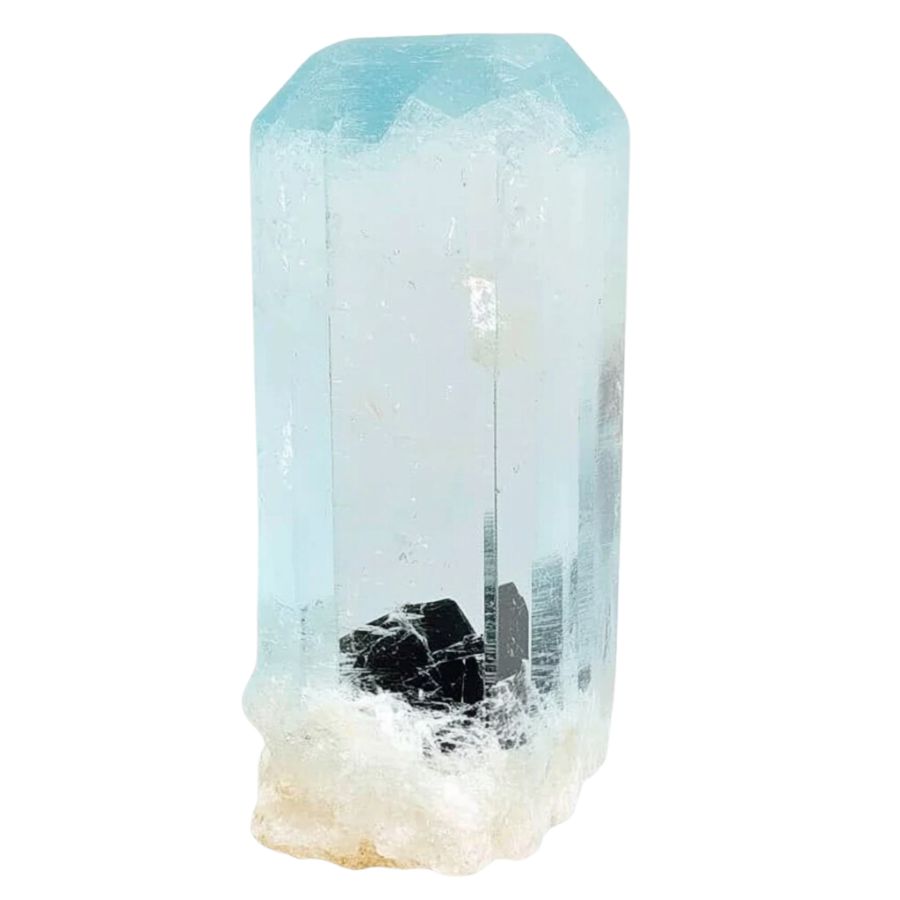
Pay close attention to how much light passes through the crystal. Some crystals are completely clear, allowing light to pass through easily, while others may be opaque and block light entirely.
You might also encounter crystals with translucent edges but opaque centers. These variations in transparency can offer valuable clues about the type of crystal you’ve found, making it easier to identify and appreciate your discovery.
A Quick Request About Collecting
Always Confirm Access and Collection Rules!
Before heading out to any of the locations on our list you need to confirm access requirements and collection rules for both public and private locations directly with the location. We haven’t personally verified every location and the access requirements and collection rules often change without notice.
Many of the locations we mention will not allow collecting but are still great places for those who love to find beautiful rocks and minerals in the wild without keeping them. We also can’t guarantee you will find anything in these locations since they are constantly changing.
Always get updated information directly from the source ahead of time to ensure responsible rockhounding. If you want even more current options it’s always a good idea to contact local rock and mineral clubs and groups
Tips on where to look
Having a better idea of where to look can greatly narrow down your search and increase your chances of finding crystals. By focusing on environments where crystals are likely to be exposed, you can spend less time searching and more time discovering.
Outcrops and Exposed Rock
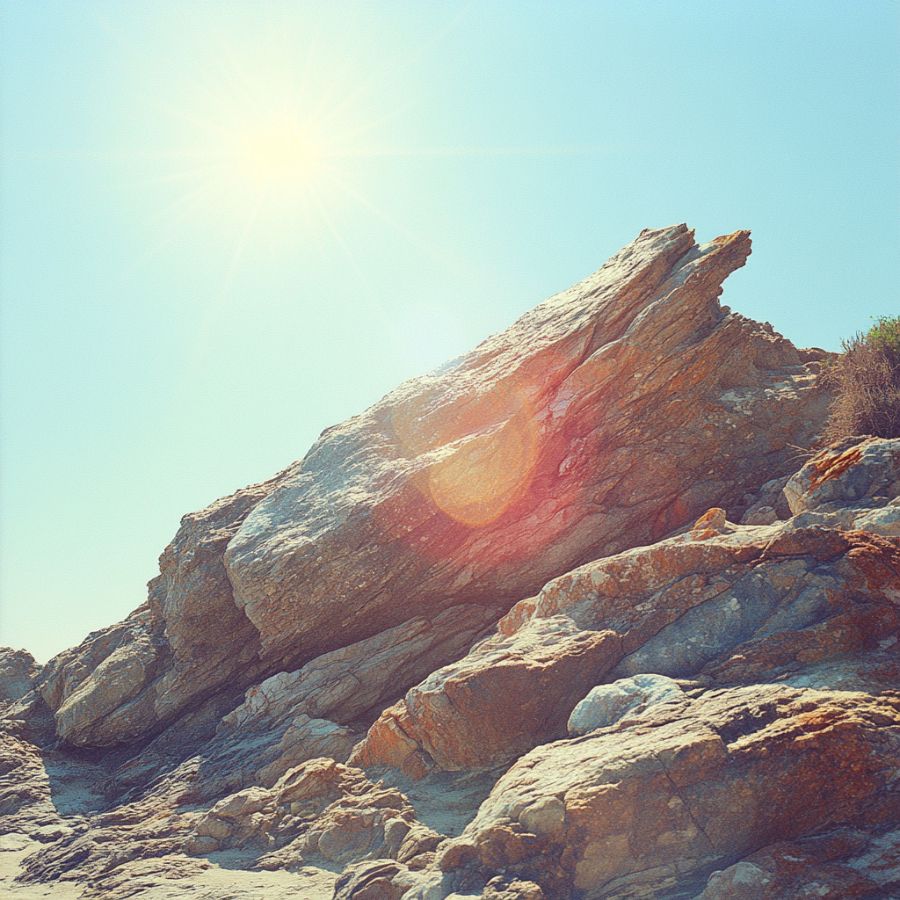
Rocky outcrops are prime locations for finding crystals and minerals. Search along the edges of outcrops, particularly where erosion has worn away the surrounding soil, revealing the rock underneath.
Pay close attention to any visible cracks, crevices, or small cavities within the outcrop, as these are often where crystals develop and can be extracted with minimal effort.
Stream Beds and Gravel Deposits
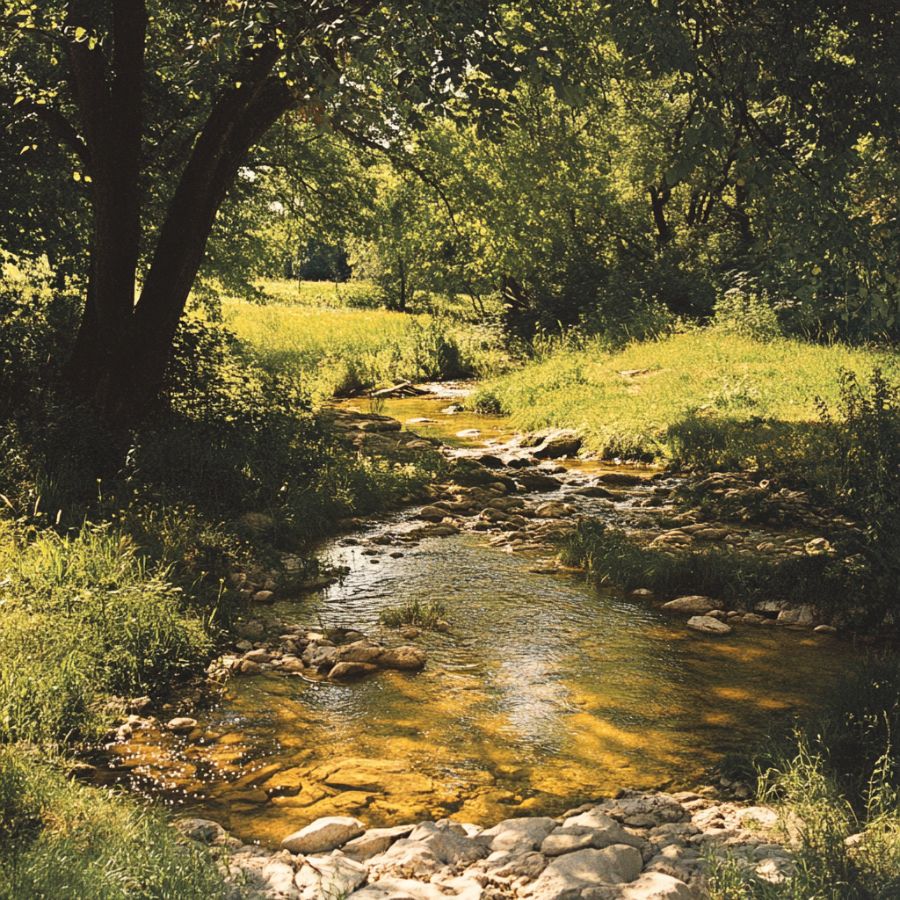
Stream beds are dynamic environments where water flow constantly shapes the landscape. Over time, water can erode rocks upstream, breaking them down and carrying mineral fragments, including crystals, downstream.
When searching in these areas, look for spots where the current has slowed, such as bends in the stream or areas behind large rocks, as these are prime locations for deposits.
Quarries and Mines
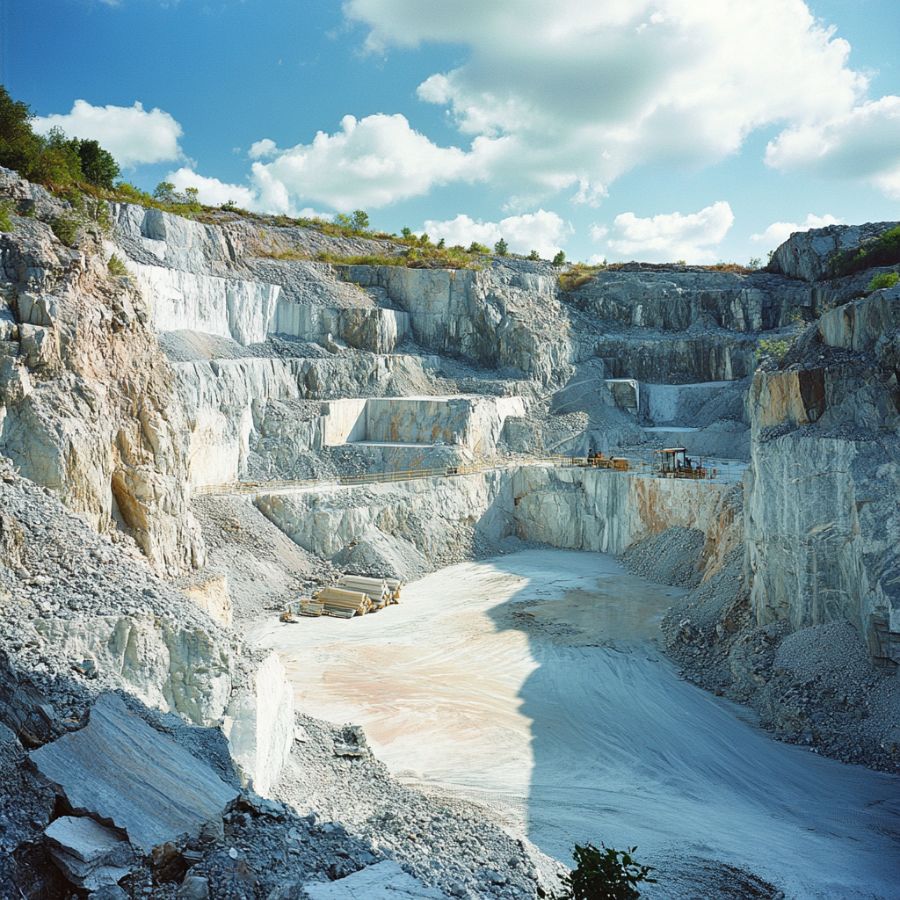
Quarries and mines are excellent places to search for crystals because they expose deep layers of rock that would otherwise be hidden beneath the surface. These sites often contain a variety of minerals and crystals that have been brought to the surface during excavation.
Pay attention to tailings piles, where waste rock is discarded, as they often contain overlooked or broken crystals. Always prioritize safety when exploring these areas and ensure that you have permission to search.
Road Cuts and Construction Sites
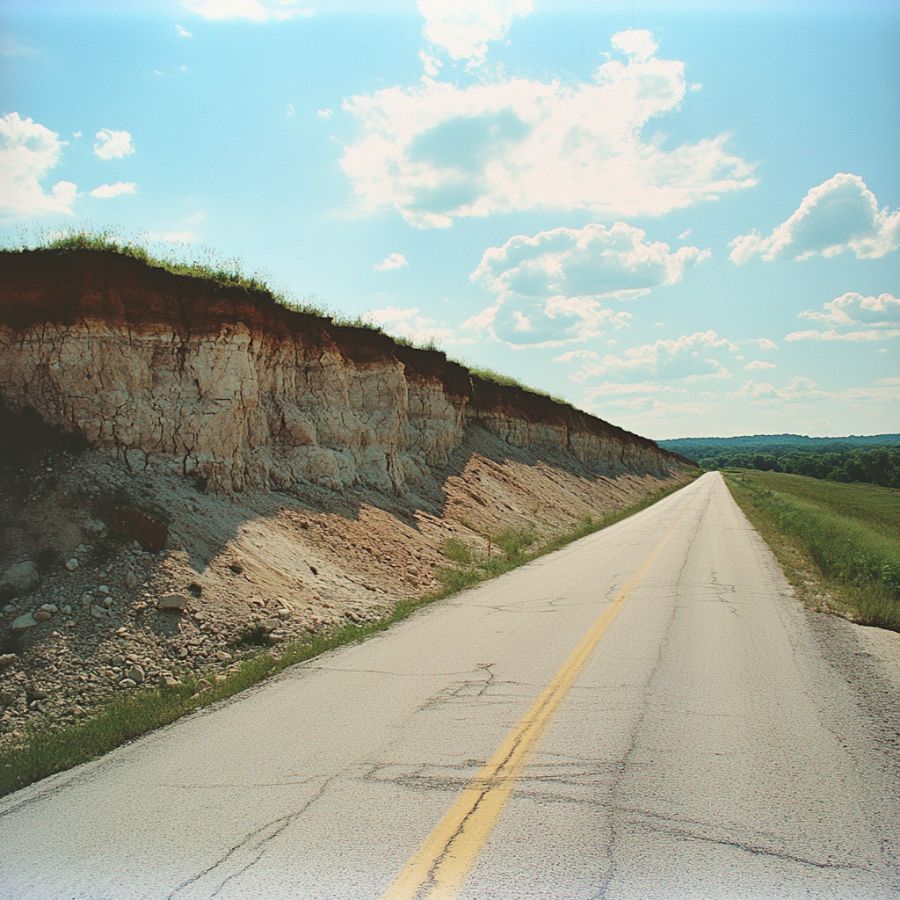
As roads are cut through hillsides or construction projects dig deep foundations, layers of rock and soil that have been undisturbed for millions of years are suddenly exposed.
Look for freshly exposed rock faces, especially where blasting has occurred, as this can create fissures or expose pockets filled with crystals. Be cautious around active construction sites, and always seek permission before exploring.
Mountainous Areas

In mountainous regions, erosion caused by wind, rain, and ice can wear away the softer rock, exposing harder crystals that have formed within. Focus on weathered and broken rock formations.
Look for scree slopes, where loose rock has accumulated at the base of cliffs. Additionally, areas near fault lines or volcanic vents are particularly promising, as they often have a higher concentration of minerals.
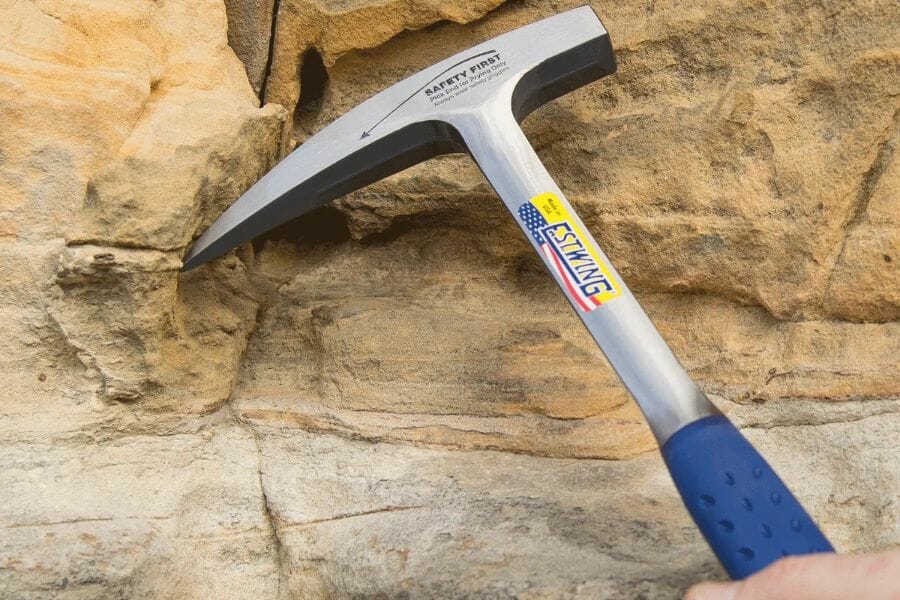
The tools every crystal hunter will need
When you're out looking for crystals having the right tools for the job is very important. You don't need a lot for most trips but there are a handful that are critical and will make your life a lot easier.
We get asked a lot about the equipment we use. Over the years we've found a handful of tools that we recommend to both new and experienced crystal miners which we outline in great detail in our complete rockhounding equipment guide. These are quality options that also happen to be relatively inexpensive.
Below are the basic tools that make your life so much easier and save you a ton of time. Check out the full guide to see everything we recommend bringing. One quick note, as an Amazon Associate I earn from qualifying purchases but we try very hard to only recommend gear we would use ourselves and often recommend brands you can't find on Amazon.
At a minimum you should have:
1 - Sturdy rock hammer: The Estwing Rock Pick is our standard
2 - Rugged chisels: Try Kendo' 3-piece Chisel Set
3 - Compact shovel: The Koleiya 28-inch shovel works well
4 - Rock screen pan: The Wazakura Soil Sieve Set fits the bill
5 - Eye protection: DeWalt Safety Glasses are cheap and comfortable
6 - Head protection: Malta's Safety Helmet has been our go-to
7 - Jewelers lens with at least 20x magnification: Jarlink's Jewelers Loop is perfect
The crystal-finding books that we use most
There are also a few books that have been extremely helpful in the search for gems. These books have great recommendations and tips:
National Audubon Society Field Guide to Rocks and Minerals: North America
Southeast Treasure Hunter's Gem & Mineral Guide
Earth Treasures: The Southeastern Quadrant
We provide links to find these tools on Amazon but some can also be found at your local hardware stores. For more recommendations check out the link to our full tool guide above.
South Carolina Crystal Mining Laws And Regulations
Crystal hunting is legal in South Carolina if you comply with the local laws of our state, especially the ones imposed by the South Carolina Department of Natural Resources (DNR) who regulates the activity here.
First and foremost, make sure you obtain any necessary permits from concerned government agencies or permission from the owner of any private land you’ll explore.
Secondly, familiarize yourself with any environmental guidelines in the area. And last but not the least, make sure you respect any crystal mining restrictions that exists in the location.
By doing this, you are helping ensure that this activity remains sustainable and legal for years to come.
- The extensive local experience and understanding of our team
- Input from multiple local crystal hunters and crystal collecting groups
- The accessibility of the crystal mining locations
- Safety and potential hazards when collecting
- Private and public locations
- A desire to include locations for both experienced crystal hunters and those who are just starting out
Using these weights we think we’ve put together the best list out there for those who love finding new crystals for our collections!
The Best Locations For Crystal Mining in South Carolina
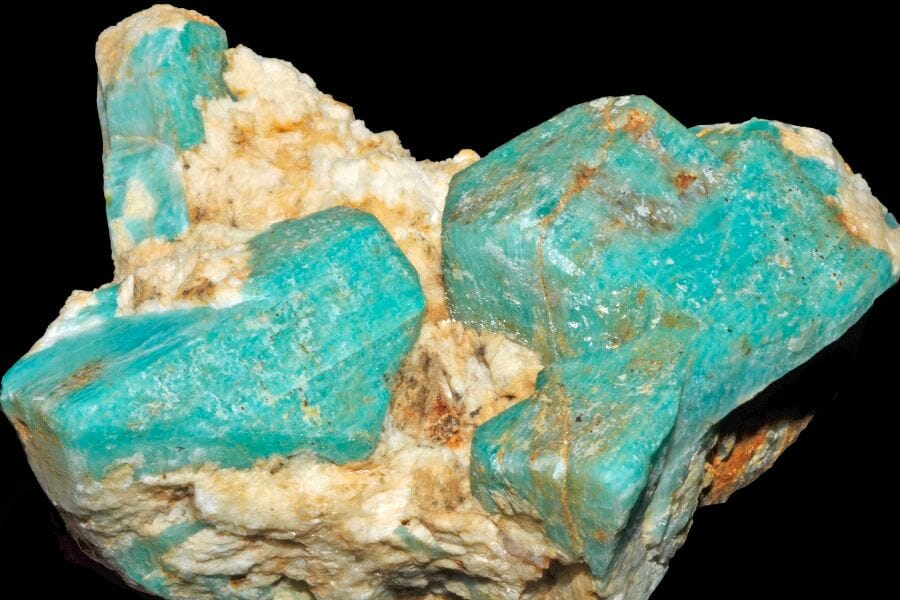
Here are the topmost remarkable places for crystal mining that you should visit here:
Always Confirm Access and Collection Rules!
Before heading out to any of the locations on our list you need to confirm access requirements and collection rules for both public and private locations directly with the location. We haven’t personally verified every location and the access requirements and collection rules often change without notice.
Many of the locations we mention will not allow collecting but are still great places for those who love to find beautiful rocks and minerals in the wild without keeping them. We also can’t guarantee you will find anything in these locations since they are constantly changing.
Always get updated information directly from the source ahead of time to ensure responsible rockhounding. If you want even more current options it’s always a good idea to contact local rock and mineral clubs and groups
Paris Mountain State Park is Our Favorite Crystal Mine in South Carolina
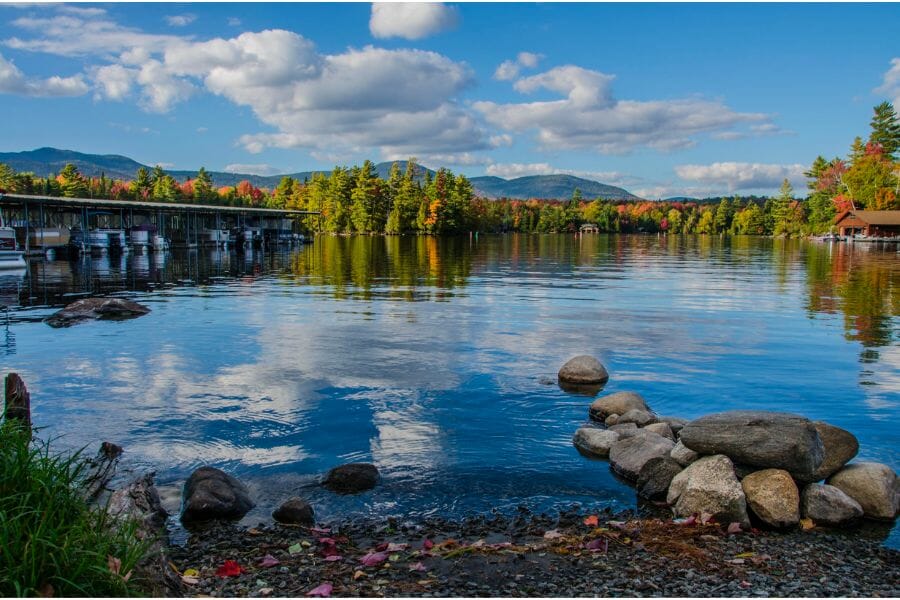
2401 State Park Rd, Greenville, SC 29609
A truly remarkable place to find some stunning crystals— and even to mine high-quality gems in South Carolina is Paris Mountain State Park. This beautiful area was once home to the Cherokee tribe, who hunted and fished in the surrounding mountains. Later, the park was used as a source of water for the city of Greenville, and it wasn’t until the 1930s that it was officially designated as a state park.
Paris Mountain State Park is located in the Upstate region of our state, just a short drive from Greenville. The park is situated on the edge of the Blue Ridge Mountains, which means that it boasts stunning views and an abundance of natural resources. Its geology is also incredibly diverse, with rocks ranging from granite to mica schist to gneiss.
This park is among our top recommended crystal mining sites here because it’s home to an abundance of crystals. These crystals can be found all throughout the park, particularly in areas where there has been recent erosion. What’s more, the park is open year-round and is pretty easy to get to. And while there’s a small fee for admission, there are tons of outdoor activities you can do here aside from searching for crystals. Win-win!
Where we found crystals at Paris Mountain State Park
We had the best time exploring the Boling Prospect at Paris Mountain State Park and we highly recommend that you search here, too. You can find different crystals like Garnet, Quartz (clear and smoky), Tourmaline, and many others here.

The tools every crystal hunter will need
When you're out looking for crystals having the right tools for the job is very important. You don't need a lot for most trips but there are a handful that are critical and will make your life a lot easier.
We get asked a lot about the equipment we use. Over the years we've found a handful of tools that we recommend to both new and experienced crystal miners which we outline in great detail in our complete rockhounding equipment guide. These are quality options that also happen to be relatively inexpensive.
Below are the basic tools that make your life so much easier and save you a ton of time. Check out the full guide to see everything we recommend bringing. One quick note, as an Amazon Associate I earn from qualifying purchases but we try very hard to only recommend gear we would use ourselves and often recommend brands you can't find on Amazon.
At a minimum you should have:
1 - Sturdy rock hammer: The Estwing Rock Pick is our standard
2 - Rugged chisels: Try Kendo' 3-piece Chisel Set
3 - Compact shovel: The Koleiya 28-inch shovel works well
4 - Rock screen pan: The Wazakura Soil Sieve Set fits the bill
5 - Eye protection: DeWalt Safety Glasses are cheap and comfortable
6 - Head protection: Malta's Safety Helmet has been our go-to
7 - Jewelers lens with at least 20x magnification: Jarlink's Jewelers Loop is perfect
The crystal-finding books that we use most
There are also a few books that have been extremely helpful in the search for gems. These books have great recommendations and tips:
National Audubon Society Field Guide to Rocks and Minerals: North America
Southeast Treasure Hunter's Gem & Mineral Guide
Earth Treasures: The Southeastern Quadrant
We provide links to find these tools on Amazon but some can also be found at your local hardware stores. For more recommendations check out the link to our full tool guide above.
Bowens River

Cherokee County, SC
If you’re looking for a unique and rewarding crystal mining experience in our state, you won’t want to miss out on exploring the Bowens River. Located in the Piedmont region, Bowens River was once a hub for gold mining in the mid-1800s. Today, it’s known for its beautiful scenery and abundance of crystals.
The river winds through the heart of the Piedmont, which means that there are plenty of opportunities for exploring and collecting along its banks. The area is rich in metamorphic rocks, including gneiss and schist, which are known for their beautiful patterns and colors. There are also plenty of granite formations, which are home to an abundance of crystals.
Bowens River is a remarkable place for crystal hunting because its location in the Piedmont region means that it’s home to an incredible variety of crystals. The river’s winding path also means that there are plenty of opportunities to explore and collect, whether you’re on foot or in a kayak.
Where we found crystals at Bowens River
You can find amazing samples of Amethyst, Garnet, Sapphire, Emerald, Quartz, Rutile, and Topaz crystals in the gravels and slate exposures of Bowens River and its tributaries. To know more about crystals’ value, read up on our guide on its prices, too.
Henry’s Knob
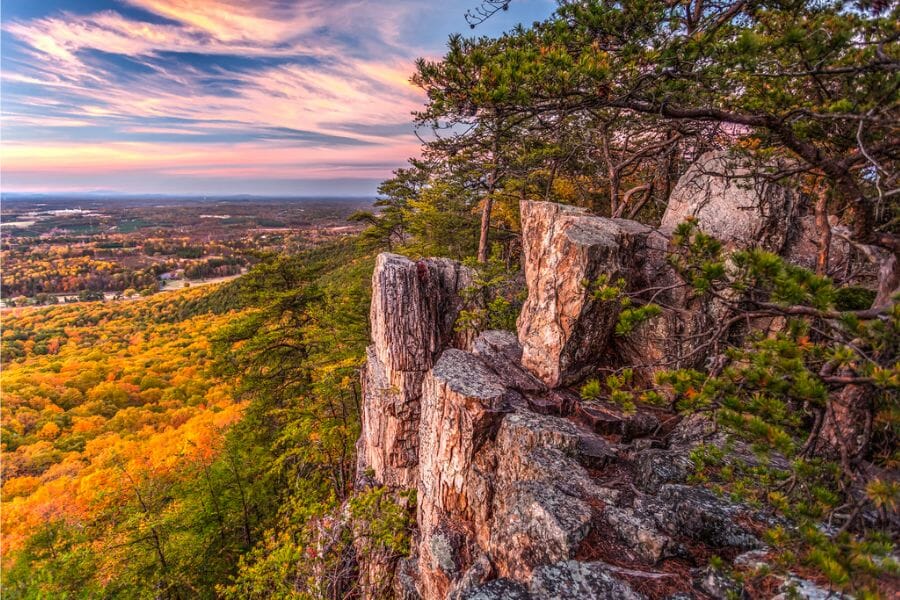
State Highway 55, Clover Township, York County, SC
Another place you shouldn’t miss out on exploring is Henry’s Knob, located in the Piedmont region of South Carolina. It was once a hub for gold mining in the mid-1800s, but today, it’s known for its stunning scenery and abundance of crystals.
Henry’s Knob is specifically known for its large and high-quality crystals that are often clear and well-formed, making them a prized addition to any collection. Plus, its rugged terrain and remote location make this place a great spot for an adventure in the great outdoors.
If you want to visit here, there are a few things to keep in mind. The area is located on private property, so you’ll need to obtain permission from the landowner before exploring. It’s also important to note that the area can be quite rugged and remote, so it’s a good idea to bring along a map and compass, as well as plenty of water and snacks. And of course, don’t forget your rock hammer!
Where we found crystals at Henry’s Knob
You can explore the rocky exposures of Henry’s Knob to find the best samples of Kyanite, Tourmaline, and other crystals here.
Clearwater
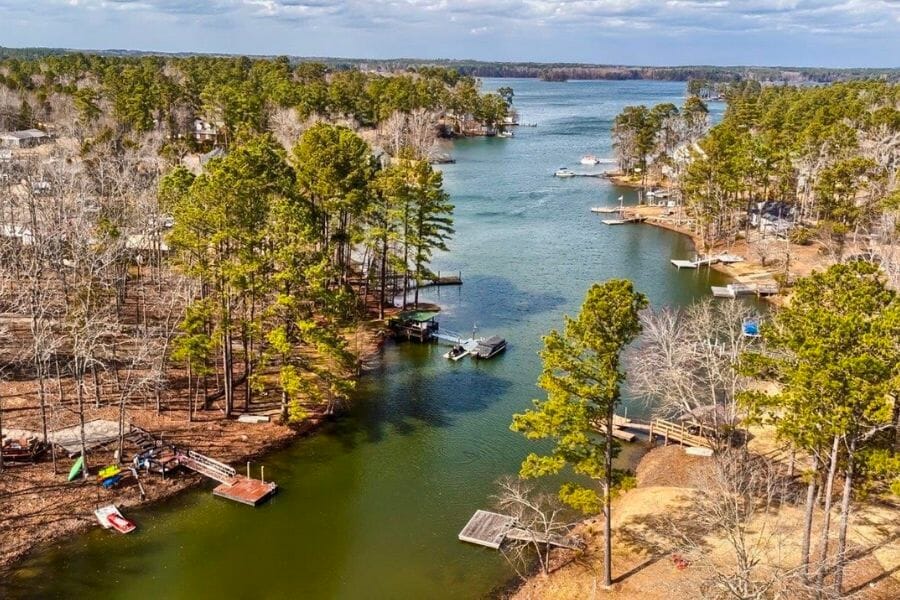
Horse Creek Valley, SC
Clearwater, located in the western part of our state, is known for its stunning scenery and abundance of minerals. To begin with, it’s situated in the picturesque Savannah River Valley and was once a thriving hub for gold mining in the early 1800s.
The area is rich in various rocks and minerals, such as granite, mica schist, and pegmatite, all of which are known for their beautiful patterns and colors. This unique geological environment makes Clearwater an ideal place to hunt for different types of crystals.
With its unique geology and abundance of minerals, Clearwater is a must-visit location for anyone interested in exploring the natural beauty of our state as they go about finding crystals.
Where we found crystals at Clearwater
We recommend starting your search in the gravels and float of Clearwater. Here, you can find crystals of Amethyst, Chalcedony, Quartz (clear, smoky, rutilated), and Rutile, among others.
King’s Creek
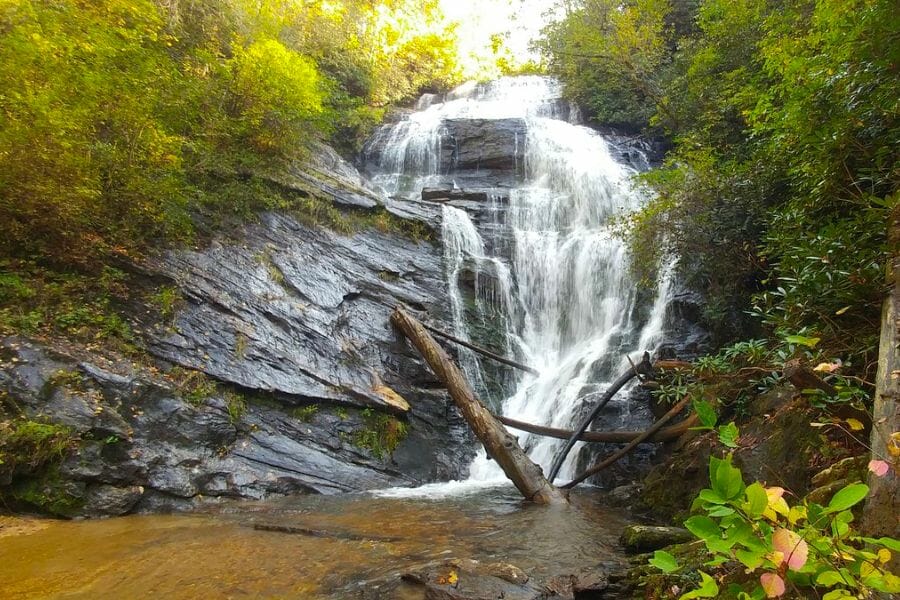
Cherokee, SC
After going all over our state, we can attest that King’s Creek is a treasure trove of beautiful and rare minerals. This location has been a popular destination for rockhounds and mineral collectors since the early 1900s. It was once home to thriving mining communities, and today, visitors can still find remnants of old mining operations scattered throughout the site.
When it comes to geography and geology, King’s Creek is situated in the heart of the Piedmont region of South Carolina, a region known for its rich and diverse geological environment.
We included King’s Creek in our top recommendations because it’s home to some of the most beautiful and unique specimens of crystals in the state. Additionally, the natural scenery in and around the creek is breathtaking, making it an ideal spot for a day of adventure and exploration.
Where we found crystals at King’s Creek
The area mines of King’s Creek abounds in different kinds of crystals, like Chalcopyrite, Galena, Kyanite, Quartz, Pyrite, and many others.
Our Other Favorite Places For Crystal Hunting
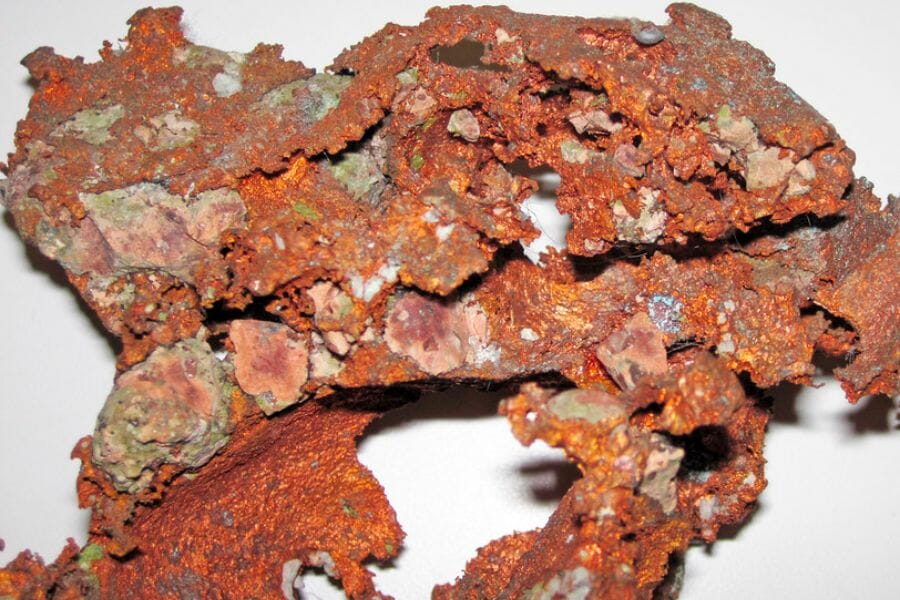
Luckily, South Carolina doesn’t easily run short of crystal hunting places. In fact, we have plenty more to suggest to you, in case you’ve already visited the top 5 that we shared above. A number of these places are also great sites to find South Carolina geodes.
Where you can find crystals for free in South Carolina
Here are some of the best free-to-search places here. We thought of separating these from the ones where you’ll have to pay a fee, just in case you want to find your crystals without much cost.
| County | Location |
| Abbeville | Countywide stream gravels, rock exposures, cut banks, and fields |
| Aiken | Across the Savannah River bridge |
| Cherokee | On Rte. 83 (the Buffalo Church road) and on the Andrew Moore farm |
| Edgefield | In Turkey Creek within sight of Hwy. 25 |
| Fairfield | Lake Murray Dam, in rock exposures along river bank |
| Greenwood | At Stockman’s Quarry and at Warren’s Place |
| Horry | At area beach gravels of Myrtle Beach |
| Kershaw | Tributary of the Catawba River, near the Wateree Reservoir |
| Laurens | At Cross Hill area |
| Lexington | At Lake Murray Dam area |
| Newberry | Prosperity area |
| Pickens | At the Head prospect and the Davus Prospect |
| Richland | Along the east shore of Lake Murray |
If you find yourself struggling to differentiate between crystals, our handy guides are here to save the day. With clear explanations and helpful tips, you’ll soon become an expert at telling similar crystals apart:
Other great places to dig for crystals
The following places are the crystal mining site here where you’d have to pay a certain fee to explore. Take note that the fees may vary depending on the season (or sometimes, it can be free, too) so make sure to reach out to these places before heading out.
| County | Location |
| Anderson | At the old Gaillard Mica Mine |
| Chesterfield | Along the Lynches River in numerous old mines |
| Greenville | At the Willimon Mine |
| Lancaster | At the Haile Gold Mine and Blackmon Gold Mine |
| Oconee | On the Middle Fork of Cheochee Creek old mine |
| Saluda | Between the Big Creek and the Little Saluda River at the Culbreath Mine |
| Spartanburg | At the abandoned Cowpens Mica Mine |
| Union | On Fair Forest Creek at the Nott Mine |
| York | At gold mines and Magnolia Mine of Hickory Grove area |
The Best Crystal Shops In South Carolina
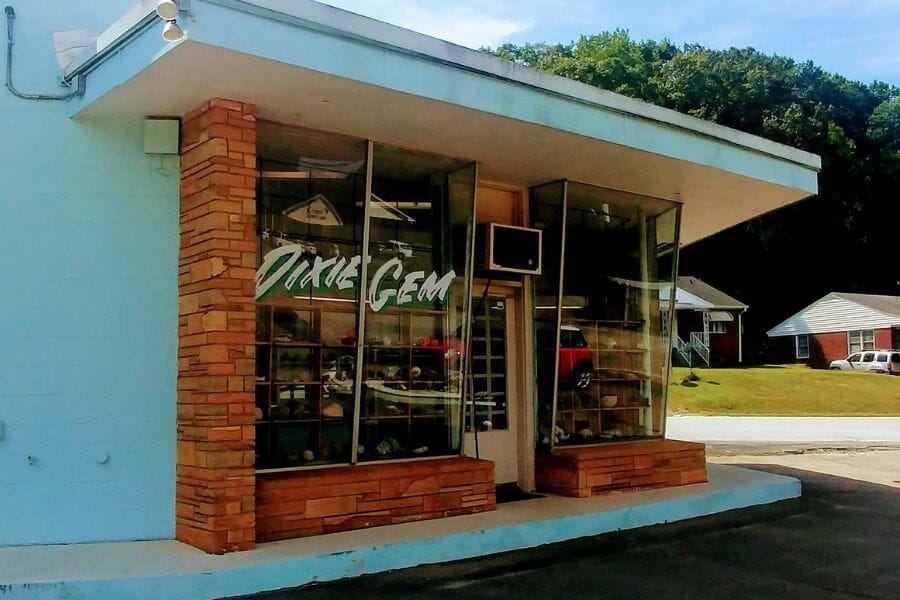
If you only have limited time to spend looking for crystals in our state, your best and surest bet is to visit the local crystals shops here. Don’t worry, because these stores has some of the most diverse options when it comes to available crystals.
- A&A Rockshop – 1614, 1624 W Main St, Lexington, SC 29072
- Gifu Crystal Xchange – 510 U.S. 17 Business South Frontage Rd, Surfside Beach, SC 29575
- Artesian Springs Day Spa & Crystal Shop – Artesian Springs Day Spa, 505 N Hickory St, Summerville, SC 29483
- Beckham’s Barn – 1751 Kennerly Rd, Irmo, SC 29063
- Wild Alabaster – 2000 Reynolds Ave Unit 103, North Charleston, SC 29405
- Pennies & Feathers Gemstones – 566 N Anderson Rd, Rock Hill, SC 29730
- Hill Rock Shop – 140 E Main St Suite 100, Rock Hill, SC 29730
- Dixie Gem – 2517 Poinsett Hwy, Greenville, SC 29609
- Black Market Minerals – 4892 Hwy 17, North Myrtle Beach, SC 29582
- The Gem Store – 509 ByPass 123 Suite E, Seneca, SC 29678
Additional places to find crystals in nearby states
If you’ve already tried all of our recommendations above or are planning a trip out of the state, you should check out our guides for neighboring states:
If you have any recommendations we haven’t covered, please leave them in the comments below!

